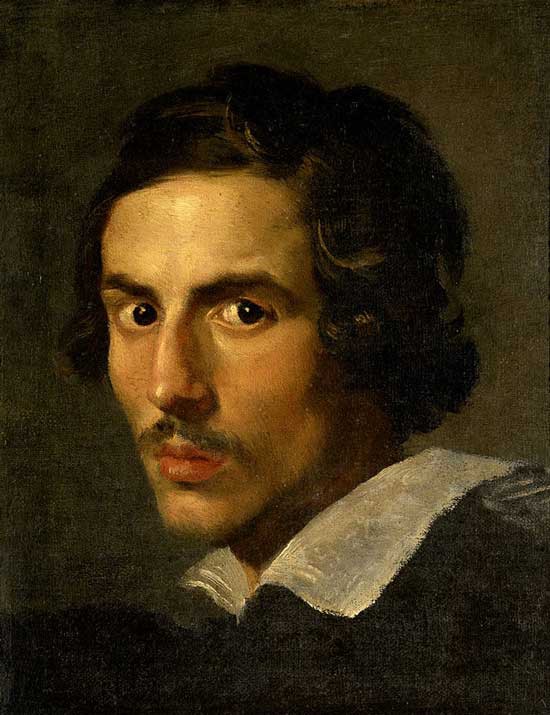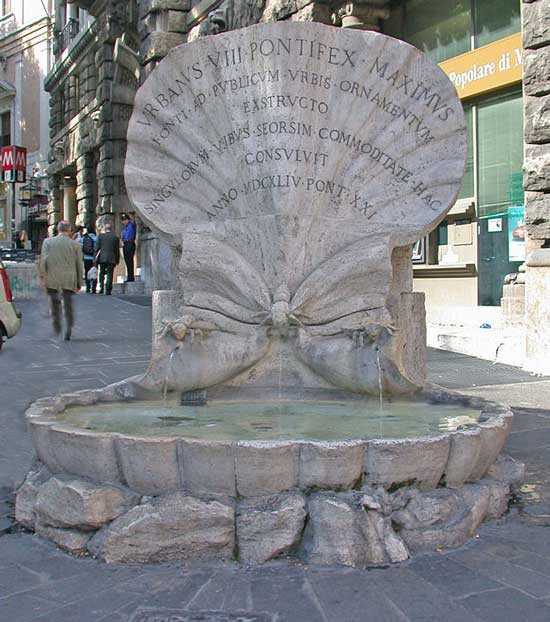During the seventeenth century the city of Rome acquires a particularly striking appearance, where the new totally Baroque taste is integrated with the pre-existing classical and medieval structures, making the city a hotbed of experimentation in architecture and urbanism.
At this moment in history, the genius of Bernini is expressed in scenographic projects following the styles of the Baroque movement, masterpieces that we can still admire today just by walking through the streets of downtown Rome.

Gian Lorenzo Bernini – self-portrait.
Maybe you’re wondering how this subject relates to the iconographic motif of the bee, as presented in the title of this little article. Well, Gian Lorenzo Bernini, the famous Italian architect, worked during his career for a rather important pope, Urban VIII. This pope was a great patron of the Barberini family and during his pontificate art was the means used to express and manifest the noble rank of the papal family. In this period Baroque was the style that best lent itself to express a series of concepts and ideas related to the programs of these leading figures of Rome’s religious and political life. Urban was a patron, passionate about art and literature, although his fame is, unfortunately, linked also to the condemnation of Galileo Galilei.
With Pope Urban VIII, Gian Lorenzo Bernini became the official artist of the court and it is to this architect and artist that we owe the creation of many objects that adorn the city centre of the capital.
The Barberini family had a coat of arms that included three bees on a blue background next to a papal tiara and to the keys of St. Peter. It is no coincidence that many popes and prominent figures resorted to symbols to express their position and to emphasize their own programs and ideals. The bee has always been a symbol of hard work, dedication, and eloquence. St. Ambrose and St. Bernard of Clairvaux, both connoisseurs and propagators of the Holy Scriptures were associated with this symbol, and in hagiographic sources they are often at the centre of episodes with bees as protagonists.
The church was often seen and interpreted since the early Christian ages as a beehive, in other words as a community in which believers and figures of the clergy were like little laborious and devoted bees. Honey was so a metaphor of the sweetness of the divine word and the Christological message.
Actually this symbol is antique and even Zeus, the father of all the gods, often called Melisseus, and according to some sources, as a child in Crete, actually fed by bees, then donating them the characteristic golden colour. No wonder, therefore, if these small and industrious animals were symbolically used throughout history.

Bernini – Fountain of bees
Bees were used as an important symbol by the Barberini family, and therefore used by Bernini to adorn his creations, among which the Canopy of St. Peter stands out for its importance and majestic nature. How could we not mention that the beautiful roman fountains designed by Bernini and commissioned by the papal family? In the very square named after the Barberini family, we find the Triton Fountain, made of travertine and with motifs of the dolphin, the shell and the newt and with the Barberini papal coat of arms with its tiara, keys and bees. Shortly after this construction, Bernini created also the so called Fountain of bees, which dates back to the seventeenth century and which was placed on the corner of Piazza Barberini and via Sistina. Today it is located in Via Veneto, thanks to the restoration and recovery of fragments of the original fountain that had been previously removed and placed in some stores in the area of Testaccio.
How not to mention also the sepulchral monument of Urban VIII? There is a niche in the Vatican Basilica that houses his monument, which took the architect some twenty years to finish. The work was completed in 1647 and it is still impossible to remain indifferent to the beauty of the white marble in which the allegorical statues or the personifications of Charity and Justice were carved. The statue of Justice holds a sword with bees and the same motif appears several times as a decoration in the area of the tomb.


